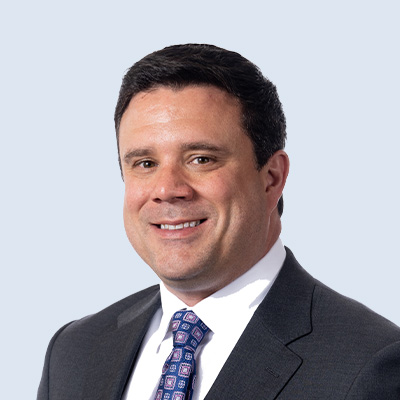Sean Ryan: This is Sean Ryan. I’m a principal and a partner with the Alexander Group, and I co-lead our technology industry practice. From time to time, we like to ask industry experts and people with a point of view that we respect to come in and offer their opinions and thoughts around areas that we work on with our clients at the Alexander Group. One of those areas that is near and dear to our hearts is go-to-market planning. And for that, we’ve brought in today an excellent candidate to help us with that discussion. Bill Schuh is the chief revenue officer of Anaplan, so he is duly qualified to give us a perspective on go-to-market planning because he is a CRO and he leads go-to-market planning at his own organization, and Anaplan works with organizations to help with their own go-to-market planning issues. So it’s a great pleasure for me to welcome Bill and look forward to a great discussion.
Bill Schuh: Thank you Sean, first of all, I’m delighted to be here, not only in general, but also talking about a topic for which I have a huge amount of personal passion. So just to introduce myself, Bill Schuh, I have the privilege of leading the go-to-market teams at Anaplan. I’ve been with the company for just about four years, and we’re in the business of helping leading enterprises around the world connect their plans and their decision making so they can out execute their competition in the market at pace. and maybe the last thing I’ll say by way of introduction, I think in the role of the CRO, there’s so much time spent focused on execution, understandably. But I’m a firm believer that the effort and process and tech that goes into planning is as important to creating a winning outcome as all of the effort that goes into execution. And yet it’s not talked about as much. So I think this is an important and timely conversation. Sean.
Sean Ryan: Yeah, I think that’s an important point to make. And I want to take advantage of your dual hat perspective here, Bill. So both as a CRO in your own right and working with a number of companies, I’m sure you’ve seen planning efforts that have gone well and planning efforts that may have not gone so well on the go-to-market side. So, I wonder if you wouldn’t mind highlighting maybe some secrets to success and conversely, maybe some pitfalls where you see things go not as well.
Bill Schuh: Yeah, absolutely. And Sean at the lead into the topic for me is, is just a bit of backdrop on what’s gone on in the macro climate. So as I talk to other CROs almost universally, the message I hear is that we’re in a different world today than we were 2 or 3 years ago. That’s true across industries. It’s particularly pronounced for my peers in technology. And when you have the conversation, what you hear is the environments become more difficult. Higher interest rates have caused CFOs everywhere to be much tighter with the purse strings. And what that’s caused is pressure on growth rates, not only in terms of new bookings, but in recurring revenue businesses, even renewals have become harder to come by. And in that environment, expense dollars have become more scarce two, three, four years ago, it was often the case that one could solve a problem and go-to-market by throwing money or resources at it, and those days are gone. So with that backdrop of a more challenging bookings environment and an environment where it’s simply not possible to throw bodies at problems, making decisions about how to allocate resources is really the key to building a winning plan. And yet the traditional approach to planning to go-to-market, I think has some fundamental flaws in it. Most notably, it’s typically the case, even in sophisticated organizations, that the planning is done in piece parts. The marketing plan is built over here, sales and sales ops then think separately about segmentation and coverage strategy and work with finance on the capacity investments. The post-sale and technical resources might be planned and still a different spot. Professional services, if that’s relevant, is planned elsewhere. and, and it’s very, very difficult, even if the will is there, it’s very, very difficult to join up the process and create a rational view of are we optimally investing the money that we have to invest in go-to-market to drive the top line and profit outcomes that are important to the business? I think that’s the fundamental difficulty that most organizations confront. And then look at what the innovators are doing, what we’re seeing is the innovators are taking an approach where they’re connecting those processes. They’re recognizing that the prioritization of marketing and investments needs to dovetail with where sales is placing investments and bets from a coverage and segmentation standpoint, which in turn needs to marry up effectively with decisions about where to invest in pre-sales resources, technical experts, so on and so forth.
Sean Ryan: No, that’s really helpful. And I think it’s, I think it’s an excellent observation because you and I probably both grew up in a tech industry where the planning process was a monolithic event. The fall plan. Oh, you know, everybody gets back from summer break, now it’s time to start planning for next fiscal. And I’m just curious in terms of how that has shifted in the companies you work with, given what you just said, which is we can’t serially plan in stovepipes anymore, we really have to look at this thing holistically. It would seem like we have to give ourselves a little more time to do that now.
Bill Schuh: I think it’s a great a great point. I mean, I think I’m seeing two dynamics from the most innovative CROs and teams that I talk with. One is a very thoughtful, integrated approach to creating the annual plan itself, which remains very important. But then there’s a pressure from the innovators to make key aspects of the planning process really continuous. So evaluating especially resource investment on a month-to-month basis. And I’ll give you a couple of practical examples. I was talking to a public company CRO, quite recently. In the midst of a very positive quarter, it was clear that they were going to have they were going to have additional opex to invest in the business. And the conversation we were having was, well, where do we deploy it if we want to maximize bookings or we want to maximize gross margin dollars, where’s the best place to place the investment? Is it sales headcount? Is it marketing spend? If it’s marketing spend, which segment? Which geo which product line? And I’m seeing leading CROs want the capability to ask and answer those questions literally on a week-to-week basis versus once a quarter, once a year. And so what that gives what that gives those CROs and their teams is the ability to have an unfair advantage relative to their competition. If they’re able to ask and answer questions like that and make better decisions around where to invest their resources and go-to-market and drive superior returns, they’re creating a tighter decision loop than the folks than their peers in the market, which means they can be more responsive to customers, more responsive to opportunity, more responsive to demands, and fundamentally being positioned to win.
Sean Ryan: Well, let’s get to the I totally get what you’re saying. Let’s get to maybe the practical on the ground element of that as a CRO. So even if you have combined the functions in the organization into a single view of go-to-market and it’s end to end and not stovepipe and done kind of, consecutively, if you like. You still have people sitting in fiefdoms and human nature is I’m going to fight for that extra incremental dollar of resource because I know where I can spend it and, be successful. So, you know, maybe with your CRO hat on, what are some practical tips around how you adjudicate some of that, some of that healthy competition for, that extra incremental dollar of resource.
Bill Schuh: Yeah. Sean, I think you hit the nail on the head. I think it is healthy competition. I think of it as dynamic tension in the business that needs to exist to create the best possible outcome for the enterprise. because you’re right, the geo leaders or the functional leaders will tend to want to maximize whatever’s in their lane. So I’ll pick one example. One of the things we’ve done internally to aid this continuous planning decision making process in our own business is we’ve created we’ve created very transparent theater level panels. And, as you might expect, we’re instrumenting those in Anaplan. But tech aside, one of the metrics that we look at is sales and marketing expense as a percentage of billings. And what that allows us to do is have very open conversations about the tradeoffs we’re making. There’s not necessarily a right or wrong answer. As an example, a market like Germany for us is emerging. It’s got lots of potential. We’re less penetrated in Germany than we are in the US. As a point of comparison. The US is a more efficient market for us. We spend less on a proportional basis in sales and marketing per dollar of billings than we do in Germany. So it’s not necessarily about forcing the optimization, it’s about the ability to have the conversation and say, okay, how are we balancing these priorities? We expect to build a business in Germany 3 or 4 years from now. That’s 3 or 4 times the size of the current business. It just lets us have an intelligent conversation. And I think in the absence of joining up the silos and the stovepipes, in the absence of creating transparency, it’s hard to have the right conversation.
Sean Ryan: Yeah, and it’s difficult in this environment where you point out investment dollars are scarce. And we have these discussions with clients all the time. To really understand the size of the prize for investments that you’re making and being able to sort between what is going to be an investment that pays a disproportionate yield versus those that might be more speculative. So, I’m just curious how you think about that internally, maybe how you help your customers think about that investment profile versus risk in a market where capital is a lot more expensive than it was two years ago.
Bill Schuh: Yeah, it’s a great question. I mean, for us, part of this is a process. it’s a process question. So we made a decision about 18 months ago to bring certain investment decisions to the top. And so, for example, new markets decisions we bring to the top, because we want the ability to evaluate if we’re going to invest in the Middle East or we’re going to invest in Indonesia, I don’t want to make the best investment decision in a given theater. I want to make the best investment decision at the company level, and I want to be able to ask the question, is putting capital in a new market better than just doubling down in a market that we’re already in, or in a segment that we’re already in? so from a process standpoint, we brought those decisions to the center. We’ve created a lingua franca around how we’re evaluating the investment decisions, what metrics matter, what time frames we’re evaluating. And then I think the most important thing we’ve done from a discipline and execution standpoint is for the business cases we’ve approved we’re tracking the line-item detail and, the progress against the business case, good, bad or otherwise is a discussion in every QBR. So for example, we stepped up our investment in the Middle East which sits in our EMEA theater. We have a discussion every quarter about we said we were going to deliver X. We did deliver Y. What’s driving the variance? If it’s a positive variance, we might actually have a discussion about increasing investment If it’s a negative variance, there’s accountability for the for the leaders that run that business around how do we get back to the plan we committed to.
Sean Ryan: Which also implies you can measure all of that.
Bill Schuh: That’s right. And we’ve done and we’ve done the work to measure all of that.
Sean Ryan: So, Bill, it’s been a great discussion maybe by way of closing out, if you’re if you had some advice for a CRO or someone maybe sitting in, strategy or planning job as they’re thinking about planning for next year, what are the things you’d have those individuals think about, as we roll deeper into the summer here and closer to next fiscal.
Bill Schuh: Yeah, it’s a great question. I mean, the first thing I do is if I were in the CRO seat, is I would sit with my operations and finance counterparts and have an honest conversation, are we best in class in terms of planning? Because stepping back, Sean, to the outset of our discussion, I think planning is about creating a winnable game. You want a plan that’s ambitious enough to drive the best outcome for the company, and you want a plan that allows the human beings in your go-to-market organization to be successful, be energized, bring their friends and colleagues into the organization, etc. and doing that requires a good process. It requires good data. It requires the right tech, it requires the right leadership, bandwidth and attention. And I think too often it gets less attention than the day-to-day execution. So for me, that’s the first conversation. And then I would look very carefully at the tech that’s in place to support the process. The reality is, if you subscribe to the notion that in a modern go-to-market system, the plan needs a set of fundamental connections across the piece part of go-to-market then you need a data and tech environment that supports visualizing that, creating plans that way, tracking, tracking actual performance against the plan in that fashion so that you can do it well not only once a year in the fall to support to support your annual plan and your kickoff, but so that you can be in position where you’re having really meaningful trade off discussions month to month as you execute the business. And again, that’s what we see our leading clients do. They’ve moved their planning capability to the point where they’re able to make high impact decisions at the speed of the market in a way that gives them competitive advantage. And I think that’s fun.
Sean Ryan: Well, you’ve given us a lot to think about, Bill. I really want to thank you for joining us today. just really great insight, from those multiple perspectives of being a CRO and seeing how a lot of other organizations plan. I think it’s, invaluable the insight you provide. With that, would like to conclude the conversation for today. So thank you very much for joining us again, Bill.
Bill Schuh: My pleasure. Sean, thanks so much.
Sean Ryan: And for additional information, please feel free to join us at Alexander Group.com. Thank you.





